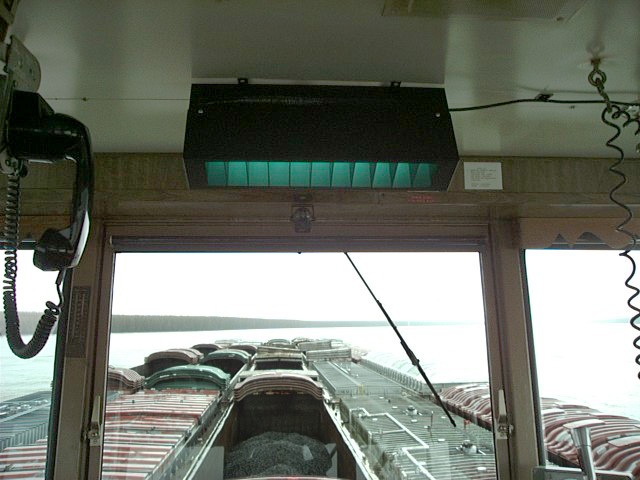GreenLIGHT Lamps in the Work Place
Night Work Adversely Affects Health and Performance
The alertness and judgment of night shift workers is often impaired, and they face higher levels of health problems like diabetes and heart disease. These problems can be substantially reduced or eliminated by aligning their body clocks to the work schedule with proper light exposure.
HARVARD uses Lo-LIGHT lamps in NASA study
Harvard selected Sunnex Biotechnologies Lo-LIGHT lamps for a NASA study on alleviating the alertness and performance deficits of astronauts and night shift workers, and confirmed that the GreenLIGHT technology provides the most effective wavelengths for regulating human circadian rhythms.
Upon determining human circadian sensitivity to visible light wavelengths the Director of Harvard's Sleep Medicine Division explained "the most efficacious specialized light source should have a peak near 500 nm", and that in this study he would be using "new specialized light source for our studies; retrofitting our laboratory with specialized lamps (manufactured by Sunnex Biotechnologies, Winnipeg, MB, Canada) with a peak sensitivity near 500 nm." More.
From NASA's Advanced Capabilities Division Research and Development Task Book]
"Night Shift a Carcinogen".
New research supports the WHO classification of night shift work as a “probable carcinogen”. The study published in April 2019 finds night shift workers have impaired DNA repair mechanisms resulting in 30% higher levels of DNA breaks, which are associated with increased cancer rates.
In addition to cancer, several neurological ailments associated with aging, such as Parkinson's disease, Huntington's disease, and Alzheimer's disease, are linked to increased levels of DNA damage or impaired DNA repair mechanisms, as are heart disease and diabetes. Ref A meta analysis of 31 studies found that the risk of heart disease rises with each additional year of working on the night shift. Ref Light Therapy is proposed as a method of preventing circadian rhythms disturbance and deterioration in the health of night shift workers.
The National Sleep Foundation links long term night shift work to higher rates of type 2 diabetes, heart disease, certain cancers, pulmonary disease and neurological diseases, as well as metabolic problems, ulcers, gastrointestinal problems, obesity and depression. Disturbed sleep and disrupted circadian physiology and are considered to be the cause of the health problems and performance deficits found in people who work at night. Ref
The immune system displays circadian oscillations in immune function, being higher at night and lower during the day. Circadian disruption leads to dysregulation of immune responses and inflammation which can further disrupt circadian rhythms. Circadian biology of immune response influences respiratory-related inflammatory diseases including chronic obstructive pulmonary disease, allergic rhinitis, and asthma.
Re-aligning circadian physiology with the work schedule using properly timed light therapy can eliminate the deterioration in performance and alertness of night shift workers. Light therapy should also eliminate the negative effects that night shift work has on health.
Sleep loss can have harmful effects on 'virtually every system' in the body.
In a 24-hour economy, where demands must be met, the long-term health toll on night shift workers can be high. Night shift workers have higher rates of obesity, Type 2 diabetes, high blood pressure and depression. Shift workers are also more likely to have heart attacks and strokes, and the World Health Organization says shift work is a probable cause of cancer.
"People working at night also have a limited ability to maintain a coherent stream of thought
when they're awake when they're not supposed to be".
More at
Round the clock: The health perils of working overnight CBC
University of Pennsylvania researchers - Working the Night Shift causes cancer
The Daily mail reports that "Disrupting the circadian rhythms that fuel our sleeping and waking cycles may 'turn on' genes that encourage cancer cells to multiply and 'turn off' the ones that block tumor growth, according to the new University of Pennsylvania study.
"We suggest that chronic disruption of the normal circadian rhythm tips the balance between
tumor-suppressive and tumor-progressive gene expression to favor tumor growth,' said Dr Amita Sehgal,
study co-author and neuroscience professor at U Penn."
More at
Working irregular shifts and poor sleep are linked to higher risks for cancer
and Journal Publication in PLOS

USCG develops night work adaptation system
using Lo-LIGHT lamps
Using low-intensity Lo-LIGHT
lamps the U.S. Coast Guard developed a light management protocol to regulate circadian rhythms for CEMS,
a night work adaptation program. Trials with Lo-LIGHT lamps
were conducted on Coast Guard cutters and commercial vessels. In cooperation with the American Waterways
Operators (AWO), the CEMS program was tested and found effective for countering the adverse alertness and
performance effects of night shift work on ocean going vessels and tow boats operating on inland rivers.
More on CEMS
Improving Alertness and Performance on the Night Shift
Safely and Comfortably
Lo-LIGHT lamps,
effectively shift the internal body clock at low levels of brightness, making them
comfortable and adaptable for any type of workplace, without disturbing others working nearby.
Lo-LIGHT lamps are comfortable and do not
emit the blue light rays that are hazardous to the eye, making them safer than ordinary office
fluorescent lighting.
See Using the GreenLIGHT System for
counteracting night work fatigue
and
Studies with GreenLIGHT lamps in the Workplace.
Companies interested in Night Work Adaptation Programs Please contact Sunnex Biotechnologies

